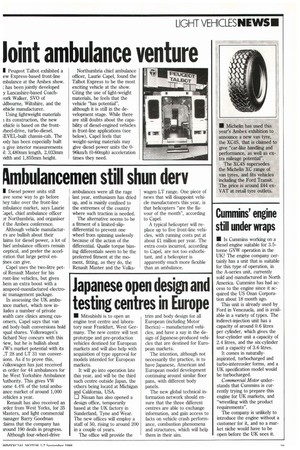ambulancemen still shun dery
Page 19

If you've noticed an error in this article please click here to report it so we can fix it.
1 Diesel power units still ave some way to go before hey take over the front-line mbulance market, says Laurie :apel, chief ambulance officer ar Northumbria, and organiser I the Ambex conference. Although vehicle manufacturTs are bullish about their 'aims for diesel power, a lot of hief ambulance officers remain ceptical, and prefer the accelTation that large petrol enfles can give.
Capel uses the two-litre petol Renault Master for his ront-line vehicles, but gives hem an extra boost with a anspeed-manufactured electroiic management package.
In assessing the UK ambuance market, which now iniudes a number of private lealth care clinics among cusomers, Capel says that van ind body-built conversions hold qual shares. Volkswagen's i.ichard Noy concurs with this dew, but he is bullish about IW's market potential with its 28 and LT 31 van conver;ions. As if to prove this, iolkswagen has just received in order for 44 ambulances for he West Yorkshire Ambulance kuthority. This gives VW mine 4.4% of the total ambuance market of around 1,000 'chides a year.
Renault has also received an )rder from West Yorks, for 35 Vlasters, and light commercial nanager Barry Goodman iaims that the company has iround 190 deals in progress.
Although four-wheel-drive ambulances were all the rage last year, enthusiasm has dried up, and is mainly confined to the extremes of the country where such traction is needed.
The alternative seems to be a fitment of a limited-slipdifferential to prevent one wheel from spinning uselessly because of the action of the differential. Quaife torque biasing differentials seem to be the preferred fitment at the moment, fitting, as they do, the Renault Master and the Volks wagen LT range. One piece of news that will disappoint vehicle manufacturers this year, is that helicopters "are the flavour of the month", according to Cape!.
A typical helicopter will replace up to five front-line vehicles, with running costs put at about 21 million per year. The extra costs incurred, according to Capel, are not too exhorbitant, and a helicopter is apparently much more flexible than an ambulance_
















































